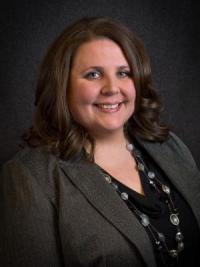Motivation, Identity, and Faculty: Why do we do what we do?

Faculty occupy many roles at the university: educators, researchers, advisors, administrators, etc. Now, faculty are taking on new roles and responsibilities as part of the STEAM Factory’s Convergent Learning from Divergent Perspectives project (NSF AISL #1811119). These new responsibilities require interdisciplinary collaborations with research colleagues and direct engagement with the public in a variety of settings in the community. In many ways, this new role pulls on skills from other roles (e.g., public speaking could be a skilled gained as an educator), but there are unique elements to this new collaborator role. While our fabulous colleagues at COSI Center for Research and Evaluation are studying the impacts on the public, our research team is aiming to understand how this new role impacts faculty members’ motivation and identity.
What is motivation? There are a variety of reasons for why we do what we do. Sometimes it’s passion. We have this deep seeded love and drive for something, usually related to our interests. Sometimes it’s money. If I do this thing, someone will pay me and who doesn’t want to make an extra buck! These various reasons for why we do what we do relate to motivation, which can be internal (e.g., our passions) or external (e.g., someone will pay me). While these two sides of motivations may seem dichotomous, they are really a continuum and are extremely context specific. For example, there are things I don’t do because I have no passion for them at all, but if you paid me, I might do it!
What is identity? Now, there are unique circumstances where the things we do impact how we view ourselves. For example, you decide to re-enroll in college for a master’s degree after working in industry for 10 years. Perhaps you have a passion for business and that drives your action. You have a thirst for knowledge and want to know more while honing your skills. But now, you’re a student. That action has now impacted how you view yourself and you’ve taken on a new role. This would be an identity impact. That new identity as a student is now going to interact with all the other identities you hold. Many of those identities are role or occupation based, some are socially constructed meaning they are based on the ways others view you, and others are self-constructed (i.e., they ways in which you view yourself). All of these dimensions of yourself contribute to your identity, both how you see yourself and how others see you.
How are motivation and identity connected? The unique situation here is that sometimes those new identities cause new actions and serve as new motivators. For example, you became a master’s student and realized you have a real passion for education so now you decide to tackle a Ph.D. This connection between action and self is the focus of this work, specifically from a faculty point of view.
How are we studying motivation and identity in our project? In our project, we’re aiming to understand why faculty participate in interdisciplinary collaborations, the value of thematic public outreach training and implementation, how this experience changes or doesn’t change their views of themselves, and what their anticipated next steps as faculty members are as a result of their participation. We use the Longitudinal Model of Motivation and Identity to bound this exploration and guide our analysis of the faculty participants while we collect data in real-time before and after they engage in the project and at each specific event. We ask questions such as “What did you learn during this experience that will impact your next presentation?”, “Who are you as a researcher?”, and “What was a highlight for presenting in each context?” to understand their development through the impact of the experience.
What is the impact of faculty’s new role? Our hope is that this experience is motivating for faculty. That through the work completed as part of this project, they are inspired and energized to do something new. We hope that faculty who’ve participated in this project see themselves differently because of their experience. We also hope that those new motivators are internalized and become part of the fabric of who they and how they identify their roles as faculty so that they continue to both: 1) engage in interdisciplinary research, and 2) share their work with the public. Finally, we hope that these developments enhance their advising and mentorship so that the next generation of scholars are also changed by this project and their advisor’s involvement. These are big hopes and dreams, but we are on a trajectory to help with understanding the nuances of these experiences and can’t wait to share the results in a future blog post!
Rachel Louis Kajfez, Ph.D. (Co-PI, Convergent Learning from Divergent Perspectives project)
Dr. Rachel Louis Kajfez is an Assistant Professor in the Department of Engineering Education at The Ohio State University. She earned her B.S. and M.S. degrees in Civil Engineering from Ohio State and earned her Ph.D. in Engineering Education from Virginia Tech. Her research interests focus on the intersection between motivation and identity, first-year engineering programs, mixed methods research, and innovative approaches to teaching. She is the faculty lead for the Research on Identity and Motivation in Engineering (RIME) Collaborative and co-director of the Toy Adaptation Program.
Email: Kajfez.2@osu.edu

